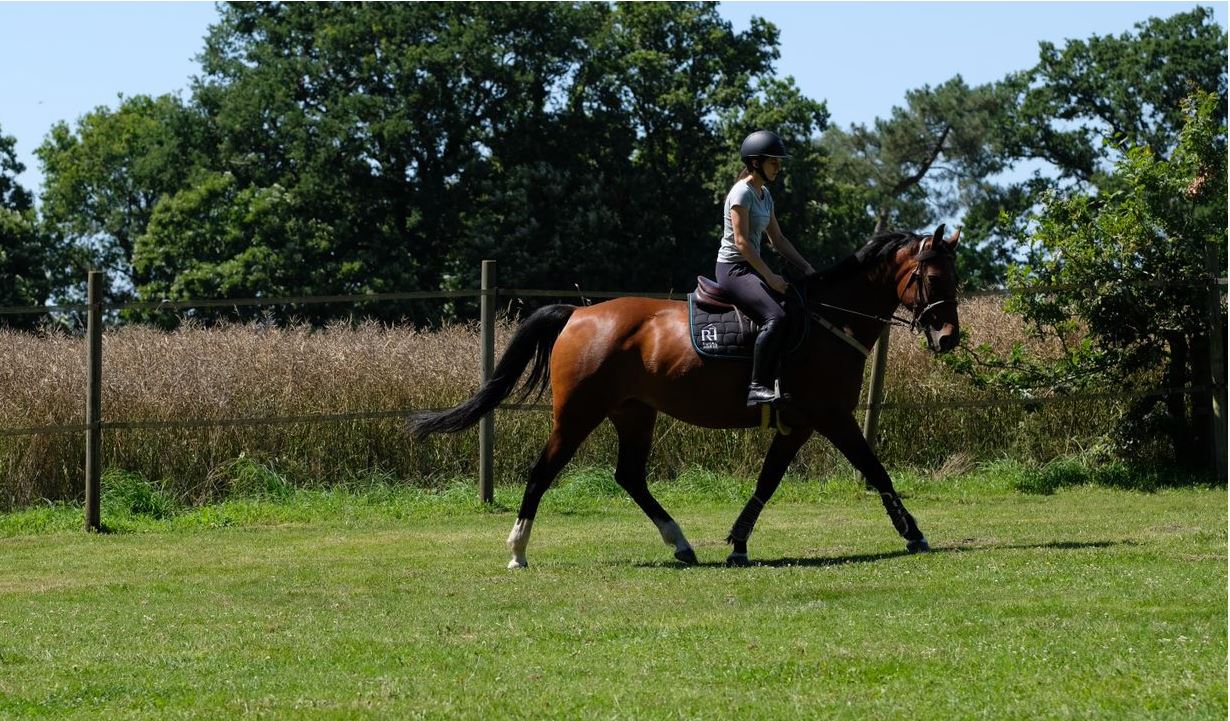The good weather is back, so it’s time for horses that have spent the winter in the stable to enjoy the pastures and their green grass again. However, as with any dietary transition, the return of your horse to the pasture must be done gradually, otherwise your horse may suffer from serious digestive disorders.
Successfully transitioning your horse’s diet
When your horse lives in a stall or in a meadow in winter, his food consists of hay and possibly pellets. Spring grass has the particularity of being very rich in nutrients. It contains more protein, sugar, vitamins and minerals than at any other time of the year. By putting your horse in the pasture, your horse will ingest a large quantity of grass since it is very appetizing, while the digestive system of your horse is still used to its winter diet. By over-consuming this grass, your horse is exposed to gaseous colic, diarrhea or even laminitis.
In order to ensure a smooth transition, it is recommended to put your horse back in the pasture only gradually. For example, you can put him in the pasture for an hour a day for a few days, then gradually increase the time spent in the pasture. The dietary transition should take place over one or two months. His ration must also be rebalanced accordingly, in order to take into account this new nutritional intake.
In order to avoid overconsumption of grass, you can take your horse out after he has received his hay ration. With a full stomach, your horse will be less likely to fill up on grass right afterwards. Also, always leave hay available in his pasture.
If you can’t control the time your horse spends in the pasture, you can have him wear a fasting basket for part of the day to limit his grazing time.
Also note that spring grass is often very high in potassium and low in magnesium, which can lead to cramps or muscle pain. Therefore, make sure that salt is always available for your horse.
Horse feeding: understanding the nutritional value of spring grass
When your horse lives in the pasture, it can graze for 12 to 17 hours a day, which can represent up to 3 kilos of grass per hour! Given the richness of the grass (especially from April to June), this quantity can be more than enough to meet or even exceed his nutritional needs, so you must remain vigilant about your horse’s diet so that he does not become overweight. As the season progresses, the grass will become poorer in nutrients, so you will have to rebalance your horse’s diet if necessary.
If your horse works regularly or competes, it is preferable to keep a balanced ration with fibers (hay in good quantity) and pellets to ensure that all the food needs of your horse are covered. In this case, it will be necessary to limit his access to the meadow or place him in paddocks with little grass. Royal Horse feeds for competition horses or leisure horses, available for sale online or in specialized stores, contain all the nutrients that your horse will need to practice a regular or even intense exercise. Royal Horse, expert in the nutrition of all types of horses, also offers a mobile application that will allow you to choose the right feed for your horses and the right ration.
Horse feeding: prepare your horse for life in the meadow
In the pasture, your horse is exposed to digestive parasites. Once installed in the horse’s digestive system, these parasites feed on the nutrients ingested by its host, which causes a rapid loss of condition. It is therefore essential to regularly deworm your horse, as well as his pasture mates if he has any.
Your horse will also be exposed to insects, which can be very disturbing. Between the bites and the itching, insects can become a real source of stress for your horse. So be sure to avoid pastures near water, or to take him out to pasture only at the end of the day. You can also equip him with masks and fly covers if necessary.



